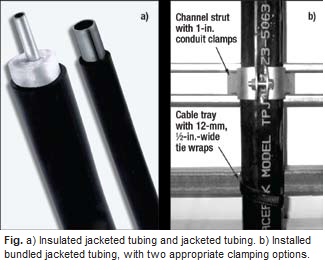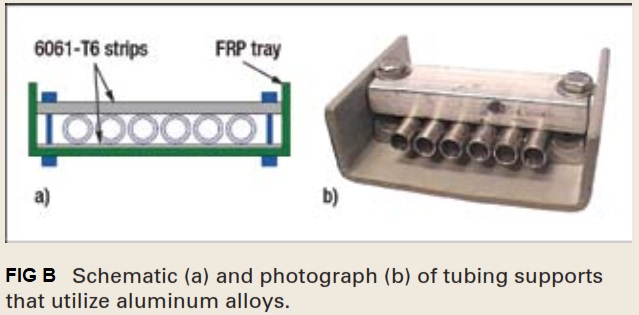Jacketed Tubing Application
The Jacketed Tubing application and technic combine with tube support material.
Jacketed Tubing with material Stainless steel or others material many used in on oil and gas platforms for process application. As well as chemical inhibition, hydraulic lines, impulse lines and utility applications with range of temperature, flow and pressure. Unfortunately, all over the global in offshore oil and gas application, corrosion of 316 stainless steel tubing has been observed.
Jacketed tubing applications in seawater environments with one pipe. They must need alloys and highly resistant to local corrosion which is the only option. So an alternative for alloy which is less resistant to crosses can be used if it is shield. Figure A is show thermoplastic polyurethane jacket tubing with offers sufficient cost-effective extrudable protection to continuous tubing, also we call Jacket Tubing.
The jacket should offer reliable protection from corrosives fluids and meet additional requirements. W the jacket must be durable, that is, it resists impact, abrasion and degradation by UV radiation. It should be possible to bend the tube and cost-effective installation of tubes, removal of jackets and tubes makeup connection. Once establish, the connection is usually must be protect from the environment by using a shrink tube or tape. Without this type of protection, sea air access is possible cause corrosion of openings in tubing openings or crevices in the gap between the tubing and the jacket.
Suitable tube clamps should be selected and properly maintained. Prevent the clamps from cutting off their jackets and data protective character. Figure A is the added advantage of a jacket tubing is the possibility to isolate, or heat. Isolate need when tubing system fluids must be kept above ambient temperature application.

TUBING SUPPORTS AND CLAMPS
Many different types of tubing supports and clamps have been used. Some of these designs have led to significant crev-ice corrosion. Especially when tight crevices with large surface areas result in oxygen depletion. So the alloy cannot reform the passive oxide layer. In particular, plastic tubing clamps have been prone to inducing crevice corrosion because the plastic deforms around the tubing and creates tighter crevices that limit oxygen ingress.
One of the early approaches to preventing or mitigating crevice corrosion. Its has been use of marine with aluminum alloys in tubing supports and clamps. In the schematic in Fig. B which show the tubing rests on a thin strip of aluminum alloy that is contain within a fiber-reinforced plastic tray. The tubing is held in place with an aluminum alloy bar. Figure 5b which shows an implementation of this design. Difference that the tubing now rests on corrugated aluminum alloy in sections.

Tubing support structures that utilize aluminum alloys are in use today and appear to be performing well. Galvanic corrosion between aluminum alloy and stainless steel may occur, but the aluminum alloy is more anodic than stainless steel. Means aluminum will corrode preferentially. Once sufficient corrosion has take place over a number of years, affected aluminum supports and clamps can be replaced while the stainless steel tubing remains in place. An alternative design has more recently been adopted for the installation of stainless steel tubing.
We are PT. Solutec Daya Mandiri is ready to supply Jacket Tubing with variation material request to your installation needed, Please Contact us.
Reference : NACE-National Association of Corrosion Engineers



